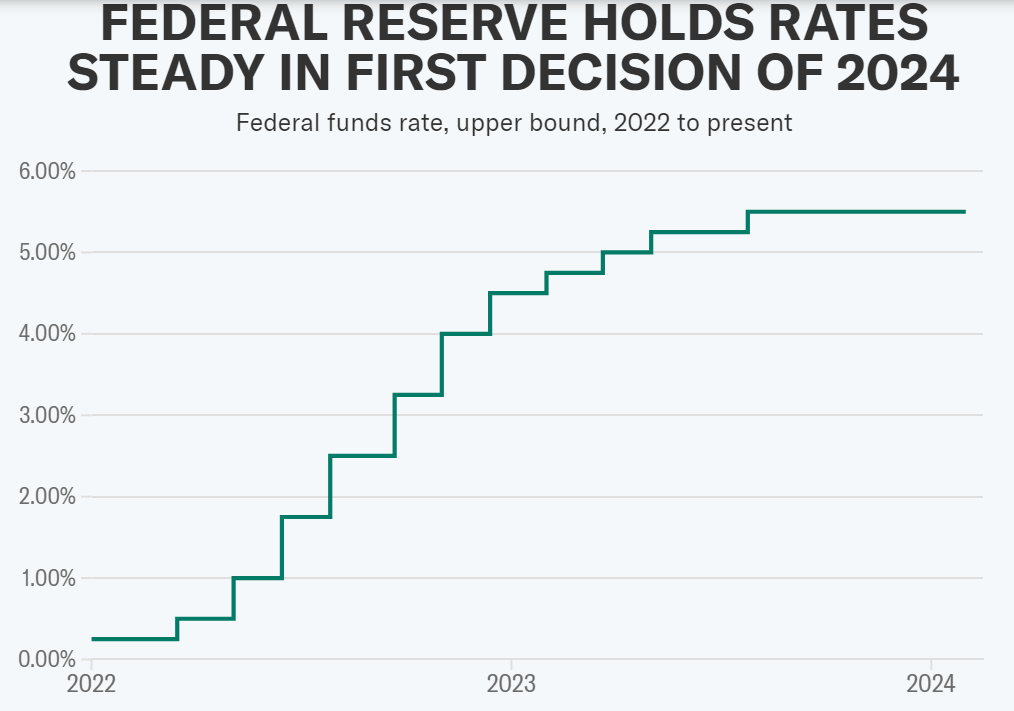Insights into the Federal Reserve’s Current Policy Dilemma and Future Directions
Introduction
The Federal Reserve’s recent statements and actions have garnered significant attention as the central bank grapples with navigating an uncertain economic landscape. In the face of unprecedented challenges, including surging inflation and lingering uncertainties surrounding economic recovery, the Fed has been forced to reevaluate its policy stance on interest rates. This article provides an in-depth analysis of the Federal Reserve’s current stance, shedding light on the factors influencing its decision-making process and the implications for the broader economy.
Recent Developments and Policy Outlook
Recent statements from Federal Reserve officials have underscored the central bank’s cautious approach to interest rate cuts amidst economic uncertainty. While acknowledging the need for caution, Fed officials have emphasized the importance of data-driven decision-making and the need for greater confidence in the economic outlook before considering rate adjustments. Despite mounting pressure from investors and market participants, the Fed has refrained from signaling a near-term start to rate cuts, opting instead to adopt a wait-and-see approach.

The Fed’s policy outlook remains fluid, with officials closely monitoring key economic indicators, including inflation, economic growth, and employment. While inflationary pressures have continued to rise in recent months, fueled by supply chain disruptions and pent-up consumer demand, the Fed remains vigilant against the risk of overheating the economy. Moreover, uncertainties surrounding the pace of economic recovery and the potential impact of geopolitical events have added complexity to the Fed’s decision-making process, further complicating its policy outlook.
Challenges and Considerations
The Federal Reserve faces a myriad of challenges as it navigates the current economic climate. One of the primary challenges is balancing the need to support economic growth with the risk of fueling inflationary pressures. While low-interest rates can stimulate borrowing and investment, they also pose risks of asset bubbles and excessive risk-taking in financial markets. Additionally, the Fed must contend with uncertainties surrounding the effectiveness of its policy tools in addressing structural issues within the economy, such as income inequality and workforce participation.
Another consideration for the Fed is the potential impact of its policy decisions on financial markets and investor sentiment. With markets closely watching the central bank’s every move, any hint of policy divergence or unexpected announcements can trigger volatility and uncertainty. Moreover, the Fed must carefully communicate its policy intentions to avoid misinterpretation and prevent disruptions in financial markets. As such, the central bank faces the delicate task of balancing transparency with flexibility in its communication strategy.
Market Impact and Investor Sentiment
The Federal Reserve’s policy stance has significant implications for financial markets and investor sentiment. Market participants are closely monitoring the central bank’s every move, with any hints of policy changes or deviations from expectations likely to trigger market reactions. In recent months, uncertainty surrounding the Fed’s policy outlook has contributed to heightened volatility in financial markets, as investors grapple with conflicting signals and evolving economic data.

Investor sentiment has also been influenced by the broader economic landscape, including developments in fiscal policy, global trade tensions, and geopolitical risks. While some investors remain optimistic about the prospects for economic recovery, others are wary of the potential for further disruptions and downside risks. As such, market sentiment remains fragile, with investors adopting a cautious approach amid lingering uncertainties.
Future Directions and Implications
Looking ahead, the Federal Reserve faces a challenging road ahead as it seeks to navigate the uncertain economic landscape. The central bank must carefully calibrate its policy stance to balance the competing objectives of supporting economic growth and containing inflationary pressures. Moreover, the Fed must remain vigilant against potential risks and vulnerabilities in the financial system, including excessive risk-taking and asset price inflation.
The implications of the Federal Reserve’s policy decisions extend beyond financial markets to the broader economy and society as a whole. As the central bank continues to grapple with unprecedented challenges, policymakers must remain committed to data-driven decision-making and effective communication. By maintaining transparency and accountability, the Federal Reserve can help anchor inflation expectations and support confidence in the economic outlook.
Conclusion
In conclusion, the Federal Reserve’s stance on interest rates remains a topic of intense scrutiny and debate as the central bank navigates an uncertain economic landscape. While challenges abound, the Fed remains committed to its dual mandate of promoting maximum employment and price stability. By adopting a cautious and data-driven approach, the Federal Reserve can help steer the economy towards a path of sustainable growth and stability. However, uncertainties loom large, and policymakers must remain vigilant against emerging risks and vulnerabilities. As the Fed continues to chart its course forward, stakeholders must remain vigilant and adaptable to navigate the evolving economic landscape effectively.

